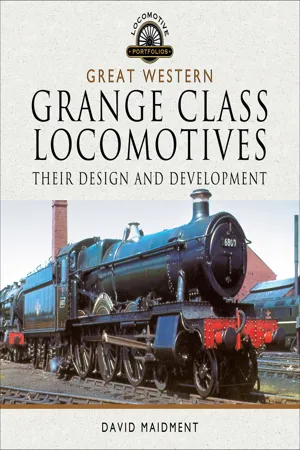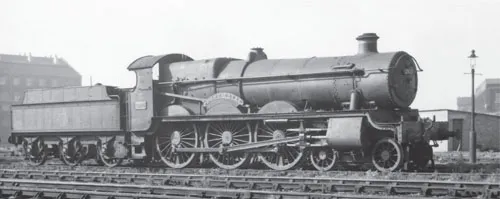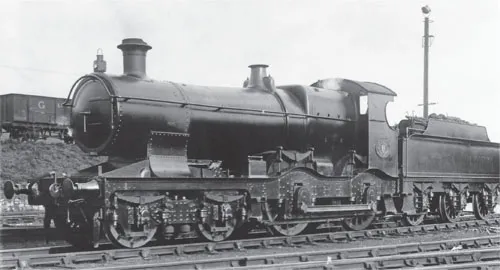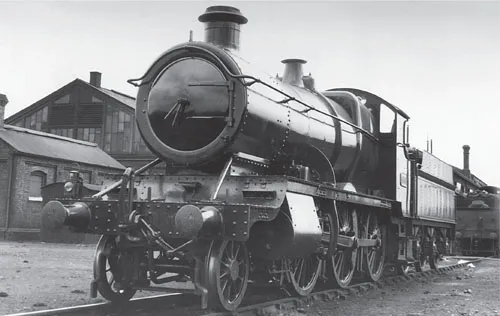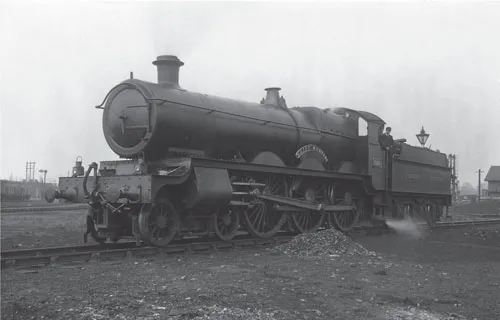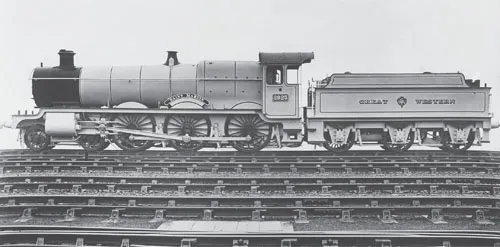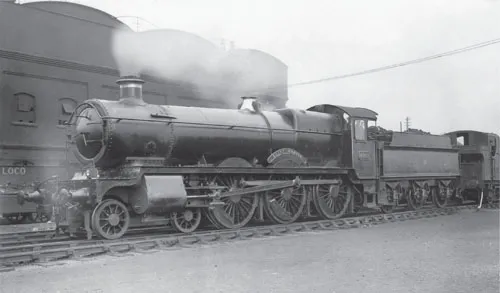![]()
Chapter 1
THE PREDECESSORS
George Jackson Churchward had been supporting the final years of William Dean’s long career as Locomotive Carriage & Wagon Superintendent at Swindon when the latter’s health had been failing. During this period, Churchward had also been studying overseas practice, particularly in France and the USA and had been in reality preparing himself for the time when he would take over formally. Whilst he had been developing Dean’s outside framed 4-4-0s for both main line and mixed traffic duties and equipping them with his taper boilers and Belpaire fireboxes, he had drawn up a plan for six new standard locomotive types to meet the needs of the Great Western’s traffic department for the foreseeable future. These designs would incorporate Stephenson’s link motion with single inside frames and outside cylinders measuring 18in by 30in stroke, 8½in diameter piston valves and his latest boiler developments.
These six designs were outline in 1901 just before he was formally appointed to the chief role at Swindon. They were for:
-A heavy main line 4-6-0 express passenger engine with 6ft 8in driving wheels (which became the ‘Saints’)
-An express 4-6-0 passenger locomotive for heavily graded routes with 5ft 8in driving wheels (which was not developed at the time but in effect was the concept of the ‘Grange’)
-A heavy 2-8-0 goods engine with 4ft 7½in driving wheels (the 28XX standard freight engine)
-A heavy 2-6-2T for shorter distance goods traffic with 5ft 8in driving wheels (the 31XX and 3150 class which developed over the years into the GW standard Prairie tanks of the 41/51/61XX series)
-A light express passenger 4-4-0 with 6ft 8½in driving wheels (the ‘County’ class)
-A 4-4-2T for short distance express passenger and commuter train operation with 6ft 8½in driving wheels (the 22XX ‘County’ tanks).
The second of Churchward’s prototype express 2-cylinder 4-6-0s, No.98, that became the foundation of all Churchward’s and Collett’s GW 4-6-0s, as built in 1903. 98 was later renumbered 2998 and named Ernest Cunard. Manchester Locomotive Society (MLS)/F. Moore
All of the above were designed, tested and were put into production in the first decade of the twentieth century with the exception of the 5ft 8in 4-6-0. A drawing of the proposed 4-6-0 was undertaken in 1905 (see Appendix, page 189) but was not proceeded with, possibly because its axleweight would have precluded it from the very routes where it would have been needed – e.g. in Cornwall where nothing heavier than the Dean ‘Duke’ was permitted at that time.
In addition to these, Churchward also designed and built in this period the 4-cylinder express ‘Star’ locomotive, more double-framed 4-4-0s and the lighter 45XX 2-6-2T for branch and local passenger work. For mixed traffic and crosscountry duties and work on the more heavily graded routes, the ‘Bulldog’ 4-4-0 with 5ft 8in coupled wheels had to suffice for that period of time.
However, at the end of the decade the need for a more powerful mixed traffic engine was deemed necessary, but instead of a 4-6-0, a less costly and lighter axleload 2-6-0, influenced by experiences of the type in America, was designed and built using what had become standard GW engine parts. The 43XX was born and was built steadily over the following ten years, until a total of 322 Churchward moguls were in service by the creation of the ‘Big Four’ national railways in 1923.
Charles Collett was appointed as Chief Mechanical Engineer in January 1922 and after developing Churchward’s ‘Star’ to produce the highly successful ‘Castle’ class, turned to the ‘Saints’ and experimented in 1924 with 2925 Saint Martin. The intention was to provide a more powerful mixed traffic engine and 2925 was equipped with 6ft coupled wheels and some minor modifications to incorporate these, plus a cab with side windows. The Great Western had introduced express vacuum braked freight services in 1904 and from 1911 many of these would have been in the hands of the capable moguls. After the First World War, loads increased and the ‘Saint’ conversion, the ‘Halls’, became the 43XX’s successor for mixed traffic duties, becoming the prototype of the class ‘5’ mixed traffic locomotive on the LMS and LNER as well as the GWR. The new mixed traffic engine had a tractive effort of 27,275lbs compared with the ‘Saint’ s 24,395lbs. Saint Martin was renumbered 4900 in 1928 and the production series of the ‘Halls’ commenced in 1929. 4900 survived until 1959, latterly based at Old Oak Common and after its 778,000 miles in service as a ‘Saint’ eventually amassed a further 1.3 million miles as a ‘Hall’, making it one of the few GWR engines that exceeded two million miles in traffic (2,082,500).
The last survivor of the Churchward express passenger 2-cylinder 4-6-0, 2920 Saint David, at Swindon c1953. It was built in September 1907 and withdrawn in October 1953 after accumulating a mileage of 2,076,299, one of the few GW locomotives to exceed 2 million miles in traffic. MLS
‘Duke’ 3254 Cornubia built in July 1895 as 3255, for mixed traffic haulage, particularly in Cornwall, renumbered in 1912 and ex-works at Swindon, c1925. MLS/F. Moore
The first production ‘Bulldog’ 3352 Camel built in October 1899, and renumbered 3340 in 1912, C1920. MLS/Bob Miller Collection
The prototype Churchward mogul, 4301, built in June 1911, at Swindon c1923. It was withdrawn in August 1936 and parts used in the building of the ‘Granges’, GW Trust
2925 Saint Martinas, built in September 1907 and converted as the prototype of the ‘Hall’ class in December 1924. It is seen here at Chester still in ‘Saint’ form, c1923. MLS
2925 Saint Martin as rebuilt as prototype of the ‘Hall’ class with 6ft driving wheels instead of 6ft 8½in, in Works Grey livery, December 1924. MLS
Saint Martin, renumbered as 4900 and prototype of the ‘Hall’ class, with inside steam pipes and 3,500 gallon tender, c1935. MLS
4900 Saint Martin, with outside steam pipes and 4,000...
